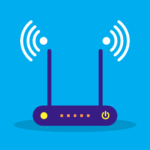
In today’s digital age, where we heavily rely on the internet for various activities such as streaming videos, downloading files, and uploading important documents, having a fast and reliable internet connection is crucial. One of the key factors that determine the quality of our online experience is the upload and download speeds.
Understanding, measuring, and optimizing upload and download speeds are essential for maximizing the efficiency of our internet connection. In this blog post, we will delve into the basics of internet speeds, how to measure your upload and download speeds, and the factors that can affect these speeds. We will also provide practical tips and strategies to improve your upload and download speeds, as well as troubleshoot any issues you may encounter.
Whether you’re a casual internet user, a remote worker, or a dedicated online gamer, this blog post will equip you with the knowledge and tools to ensure that you’re getting the most out of your internet connection. So, let’s dive in and unravel the mysteries of upload and download speeds, and discover how to optimize them for a seamless online experience.
Basics of Internet Speeds: Upload and Download
Internet speeds are typically measured in terms of upload and download speeds, which represent the rate at which data can be sent from and received by your device over the internet. To understand how upload and download speeds work, let’s take a closer look at each of these components:
Upload Speed
Upload speed refers to the rate at which data is transmitted from your device to the internet. It is relevant when you are sending emails, uploading files to cloud storage, or live streaming content. For instance, if you are sharing a large file with a colleague or uploading a video to a social media platform, your upload speed will determine how quickly the data is sent.
Download Speed
Download speed, on the other hand, measures the rate at which data is received by your device from the internet. This speed becomes crucial when you are accessing websites, streaming videos, downloading files, or engaging in online gaming. The faster your download speed, the quicker you can access and download content from the internet.
Both upload and download speeds are measured in megabits per second (Mbps) or gigabits per second (Gbps). A megabit is equal to one million bits, while a gigabit is equal to one billion bits. These measurements indicate the amount of data that can be transmitted per second.
It’s important to note that upload and download speeds are not always the same. In most cases, download speeds tend to be faster than upload speeds as internet service providers (ISPs) typically allocate more bandwidth for receiving data. This is because the majority of internet activities, such as browsing websites and streaming videos, involve downloading data rather than uploading it.
Understanding the basics of upload and download speeds sets the foundation for optimizing your internet connection. In the following sections, we will explore how to measure your upload and download speeds accurately, factors that can affect these speeds, and practical steps to improve and troubleshoot any issues you may encounter. So, let’s move on to the next section and learn how to measure your upload and download speeds effectively.
How to Measure Your Upload and Download Speeds
Measuring your upload and download speeds is crucial for understanding the performance of your internet connection and identifying any potential issues. In this section, we will explore why regular speed tests are important, introduce different tools for measuring internet speed, and discuss how to interpret and understand your speed test results.
Why Regular Speed Tests are Important
Regularly conducting speed tests is essential for several reasons:
- Performance Evaluation: Speed tests provide an accurate snapshot of your current upload and download speeds, allowing you to assess the performance of your internet connection.
- Comparison: By regularly measuring your speeds, you can compare them to the speeds promised by your internet service provider (ISP) in your plan. If there is a significant difference, it may indicate a problem that needs to be addressed.
- Identifying Issues: Speed tests can help you identify potential issues that may be affecting your internet speeds. This can include problems with your hardware or network, or even issues with your ISP.
- Optimization: By understanding your current speeds, you can make informed decisions about optimizing your internet connection and improving your overall online experience.
Tools for Measuring Internet Speed
There are several tools available for measuring your upload and download speeds. Here are some commonly used options:
- Speed Test Websites: Online platforms such as NetOptimizer.com, Fast.com by Netflix, and Google’s Measurement Lab offer user-friendly interfaces to conduct speed tests. These websites measure your speeds by connecting to the nearest server and provide detailed results.
- Mobile Apps: Many speed test providers offer dedicated mobile apps for measuring speeds on smartphones and tablets. These apps often provide additional features such as historical data and network diagnostics.
- Router Firmware: Some router firmware, such as DD-WRT and OpenWrt, include built-in speed test functionality. This allows you to measure your speeds directly from your router, providing a comprehensive view of your network performance.
- ISP Tools: Some ISPs provide their own speed test tools on their websites. These tools may offer specific insights into your connection and are worth using to compare results with third-party options.
Understanding Your Speed Test Results
When conducting a speed test, you will typically receive results in terms of your upload and download speeds, as well as additional metrics like latency (ping) and jitter. Here’s what each of these metrics means:
- Upload Speed: This represents the rate at which data is transmitted from your device to the internet, measured in Mbps or Gbps.
- Download Speed: This indicates the rate at which data is received by your device from the internet, also measured in Mbps or Gbps.
- Latency (Ping): Latency measures the time it takes for a signal to travel from your device to a server and back. It is usually measured in milliseconds (ms) and represents the responsiveness or delay of your connection.
- Jitter: Jitter refers to the variation in latency over time. A consistent and low jitter is desirable for smooth and stable internet performance.
Understanding these metrics will help you interpret your speed test results accurately and identify any potential issues affecting your internet speeds. In the next section, we will explore the various factors that can impact your upload and download speeds, providing you with a comprehensive understanding of the variables at play.
Factors Affecting Your Upload and Download Speeds
Several factors can impact your upload and download speeds, influencing the overall performance of your internet connection. It’s important to be aware of these factors to better understand and optimize your speeds. In this section, we will explore the key elements that can affect your upload and download speeds:
Internet Connection Type
The type of internet connection you have can significantly impact your upload and download speeds. Here are some common connection types and their characteristics:
- Fiber-optic: Fiber-optic connections utilize thin strands of glass or plastic to transmit data using light. They offer incredibly fast upload and download speeds, making them ideal for bandwidth-intensive activities.
- Cable: Cable connections use coaxial cables to deliver internet service. They typically provide high download speeds but may have slower upload speeds compared to fiber-optic connections.
- DSL: Digital Subscriber Line (DSL) connections use traditional telephone lines to transmit data. DSL speeds can vary depending on the distance from the provider’s central office, with faster speeds achievable when closer to the source.
- Satellite: Satellite connections rely on satellites in space to provide internet access. While they offer coverage in remote areas, satellite connections often have higher latency and lower speeds compared to other types of connections.
- Wireless: Wireless connections, such as Wi-Fi or cellular data, can provide convenient internet access. However, speeds may vary depending on signal strength, distance from the router or cell tower, and interference from other devices.
Understanding your internet connection type will give you insights into the potential speeds you can expect.
Your Internet Service Provider
Your internet service provider (ISP) plays a crucial role in determining your upload and download speeds. Different ISPs offer varying levels of service and infrastructure. Factors that can affect your speeds include:
- Service Tier: The internet plan you subscribe to will have a specific speed package. Higher-tier plans often offer faster speeds, while lower-tier plans may have more limited speeds.
- Network Congestion: During peak usage times, when many users are accessing the internet simultaneously, network congestion can occur. This can result in reduced speeds.
- Throttling: Some ISPs may implement data throttling, which intentionally slows down certain types of internet traffic, such as streaming or file sharing. This can impact your upload and download speeds for specific activities.
It’s important to regularly assess the performance of your ISP and consider alternative providers if you consistently experience slow speeds or poor service.
Network Traffic and Peak Times
Internet traffic can fluctuate throughout the day, with peak times experiencing higher levels of usage. Factors that can contribute to increased network traffic include:
- Time of Day: During evenings and weekends, when more people are using the internet for streaming, gaming, or other activities, network traffic tends to be higher. This can result in slower speeds.
- Geographical Location: In densely populated areas, where more users are sharing the same network infrastructure, network congestion can be more prevalent.
Being aware of peak usage times in your area can help you plan your online activities and manage your expectations regarding upload and download speeds.
Hardware and Software Factors
The hardware and software you use can also impact your internet speeds. Consider the following:
- Router Quality: The quality and capabilities of your router can affect your speeds. Older or low-quality routers may not be able to handle high-speed connections efficiently.
- Device Limitations: The specifications and capabilities of your computer, smartphone, or other devices can impact your speeds. Older devices may not support the latest Wi-Fi standards or have slower network adapters.
- Software Interference: Certain software applications running in the background, such as file-sharing programs or backup services, can consume bandwidth and impact your speeds.
Regularly assessing and optimizing your hardware and software can help ensure that they are not hindering your upload and download speeds.
Understanding these factors that can affect your upload and download speeds lays the foundation for optimizing your internet connection. In the next section, we will explore practical strategies and techniques to improve your upload and download speeds, enabling you to get the most out of your internet connection.
How to Improve Your Upload and Download Speeds
If you’re experiencing slow upload and download speeds, there are several strategies and techniques you can employ to optimize your internet connection. In this section, we will explore practical steps to improve your upload and download speeds. For an all-in-one tool to maximize your internet speed, NetOptimizer.com has been around since 1999.
Upgrade Your Internet Plan or Provider
- Check Available Plans: Research and compare the internet plans offered by different providers in your area. Look for plans that offer higher upload and download speeds suitable for your needs.
- Contact Your ISP: Reach out to your current internet service provider (ISP) and inquire about available plan upgrades. They may have faster options that you can switch to for improved speeds.
- Consider Fiber-optic: If available, consider upgrading to a fiber-optic internet connection. Fiber-optic connections generally provide faster upload and download speeds compared to other connection types.
Optimize Your Home Network
- Router Placement: Position your router in a central location within your home, away from obstructions and electronic devices that can interfere with the signal. This helps ensure better Wi-Fi coverage and speeds.
- Use Wi-Fi Extenders or Mesh Systems: If you have a large home or areas with weak Wi-Fi signal, consider using Wi-Fi extenders or mesh systems to extend the coverage and improve speeds in those areas.
- Secure Your Network: Protect your Wi-Fi network with a strong password to prevent unauthorized users from accessing your connection, which can lead to decreased speeds.
- Limit Interference: Minimize interference from other devices by keeping your router away from cordless phones, baby monitors, microwave ovens, and other electronics that can disrupt the Wi-Fi signal.
Use a Wired Connection
- Ethernet Connection: Whenever possible, use an Ethernet cable to connect your device directly to the router. Wired connections offer more stability and faster speeds compared to Wi-Fi.
- Powerline Adapters: If running Ethernet cables is not feasible, consider using powerline adapters. These devices use your home’s electrical wiring to transmit network signals, providing a wired-like connection to devices in different rooms.
Update or Upgrade Your Hardware and Software
- Router Firmware: Regularly update your router’s firmware to ensure it has the latest features, bug fixes, and performance improvements.
- Network Adapters: If your computer or device supports it, consider upgrading to a newer network adapter that supports the latest Wi-Fi standards for faster speeds.
- Software Optimization: Close unnecessary applications and processes running in the background that may be consuming bandwidth. Also, ensure that your operating system and applications are up to date for optimal performance.
By implementing these strategies, you can significantly improve your upload and download speeds, leading to a smoother and more efficient online experience. However, if you’re still experiencing slow speeds despite these efforts, troubleshoot your connection using the strategies outlined in the next section.
Troubleshooting Slow Upload and Download Speeds
Experiencing slow upload and download speeds can be frustrating, but there are steps you can take to troubleshoot and resolve the issue. In this section, we will explore common troubleshooting techniques to help you identify and address the factors contributing to slow speeds:
Reset Your Router or Modem
- Power Cycle: Unplug your router or modem from the power source, wait for about 30 seconds, and then plug it back in. This simple reset can often resolve temporary network issues.
- Factory Reset: If power cycling doesn’t improve your speeds, you can perform a factory reset on your router or modem. This will restore the device to its default settings, but be aware that you will need to reconfigure your network settings afterward.
Check for Background Downloads or Uploads
- Check Active Applications: Make sure there are no ongoing downloads or uploads happening in the background that could be consuming your bandwidth. Pause or cancel any unnecessary data transfers to free up bandwidth for other activities.
- Manage Cloud Services: If you use cloud storage services like Dropbox or Google Drive, check if there are any active sync processes occurring. These services may be uploading or downloading files, which can impact your speeds.
Scan for Malware or Viruses
- Run Security Software: Perform a comprehensive scan of your devices using reputable antivirus and anti-malware software. Malware or viruses can affect your internet speeds and overall system performance.
- Remove Threats: If any threats are detected during the scan, follow the instructions provided by the security software to remove or quarantine them.
Contact Your Internet Service Provider
- Report the Issue: If you have exhausted all troubleshooting steps and are still experiencing slow speeds, contact your internet service provider (ISP). Inform them about the issue you’re facing, the steps you have taken to troubleshoot it, and request assistance.
- Request Technical Support: Your ISP may be able to identify any network-related issues or provide guidance on improving your speeds. They may also schedule a technician to visit your premises if necessary.
By following these troubleshooting steps, you can identify and resolve common issues that may be causing slow upload and download speeds. Remember, if all else fails, do not hesitate to reach out to your ISP for further assistance. They are best equipped to address any network-related issues and provide solutions tailored to your specific situation.
In conclusion, understanding, measuring, and optimizing upload and download speeds are vital for maximizing your internet connection’s performance. By implementing the techniques and strategies discussed in this blog post, you can ensure that you are getting the most out of your internet service, enjoying faster upload and download speeds, and a seamless online experience.





